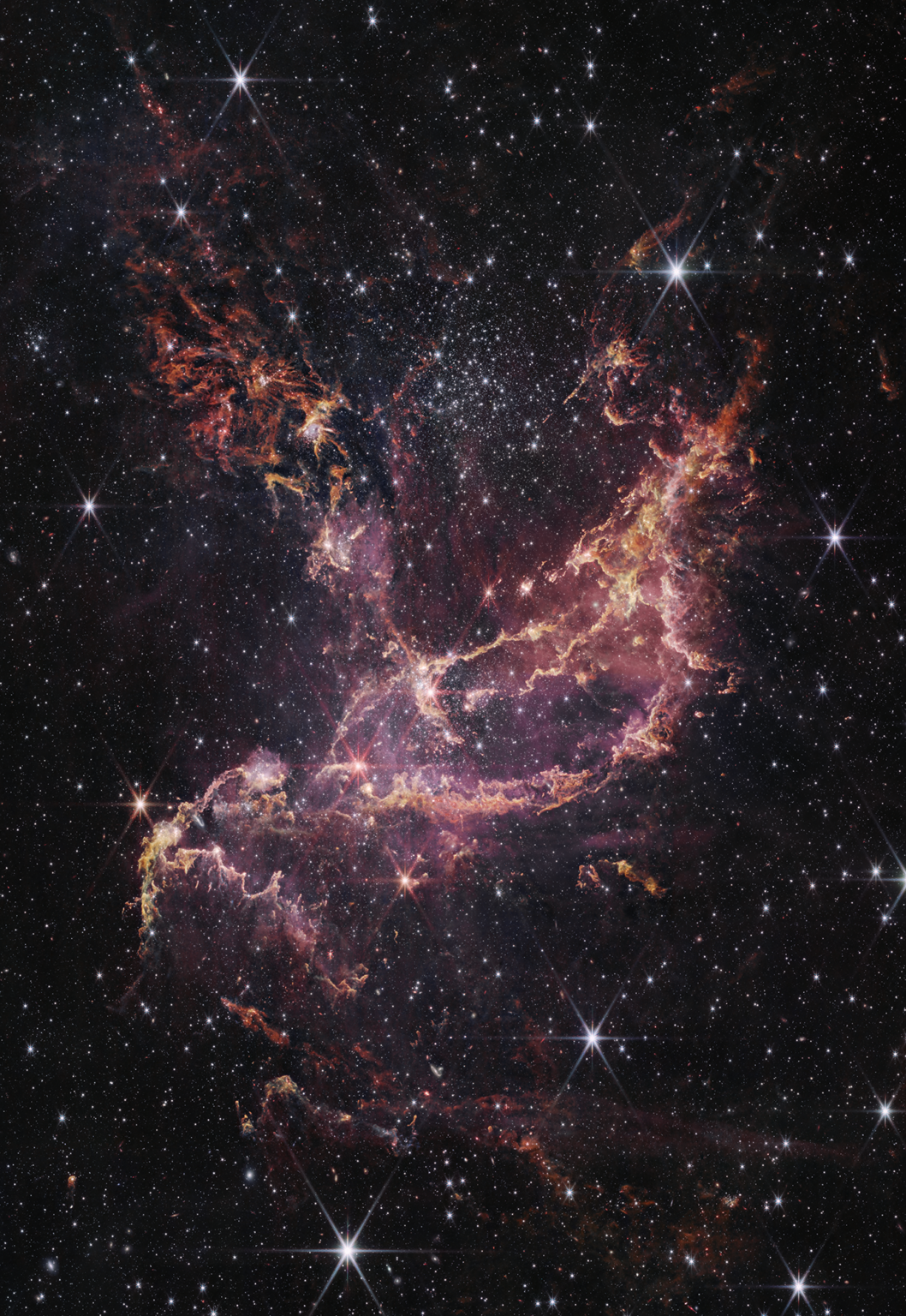The James Webb Space Telescope (JWST) has obtained an image of the NGC 346 nebula. Right now, many protostars are forming in its depths, which will give rise to star systems in the future.

NGC 346 is located in the Small Magellanic Cloud, a dwarf galaxy that is a satellite of the Milky Way. In general, it contains fewer heavy elements compared to our galaxy. This is one of the main reasons why scientists have focused their attention on this region. Indeed, in the distant past, when our Universe was noticeably younger, most of the “stellar maternity hospitals” resembled NGC 346. The main difference is that ancient galaxies had thousands of similar regions of active star formation.
During the previous observations of NGC 346, the main goal of scientists was protostars, which mass was from 5 to 8 solar masses. Now, thanks to the technical capabilities of JWST, they have the opportunity to study much smaller luminaries, including those which mass is ten times less than that of the Sun. They were interested in what effect a lower concentration of heavy elements would have on star formation processes.
According to the researchers, when new luminaries are formed, they collect gas and dust (they look like ribbons). In the future, this material is collected in an accretion disk that feeds the newborn luminary. Astronomers had previously found gas around protostars in NGC 346, but JWST’s near-infrared observations were the first time they had also detected dust in the disks surrounding them. In fact, astronomers have seen building blocks that will eventually form not only into new stars, but also into rock exoplanets capable of giving rise to new life.
Recall that JWST recently discovered its first exoplanet.
According to https://www.nasa.gov
Follow us on Twitter to get the most interesting space news in time
https://twitter.com/ust_magazine

